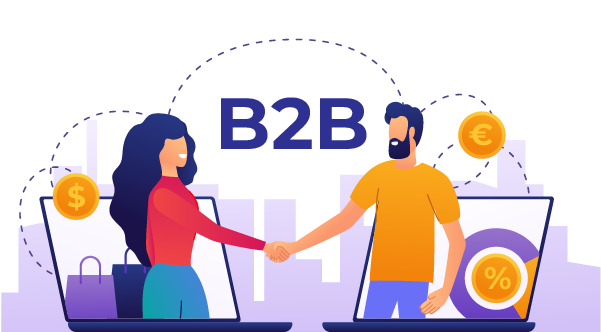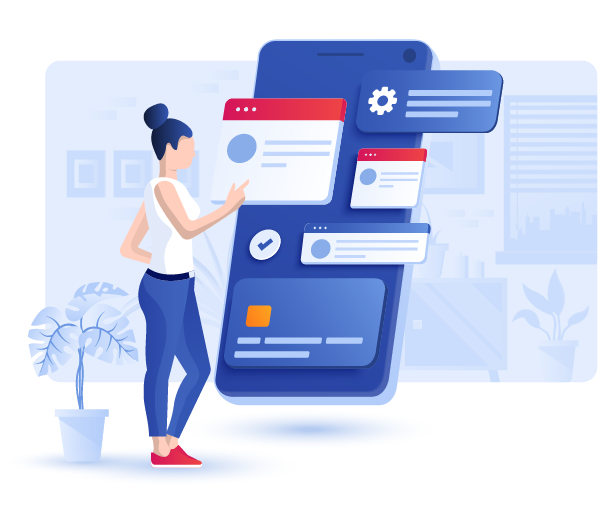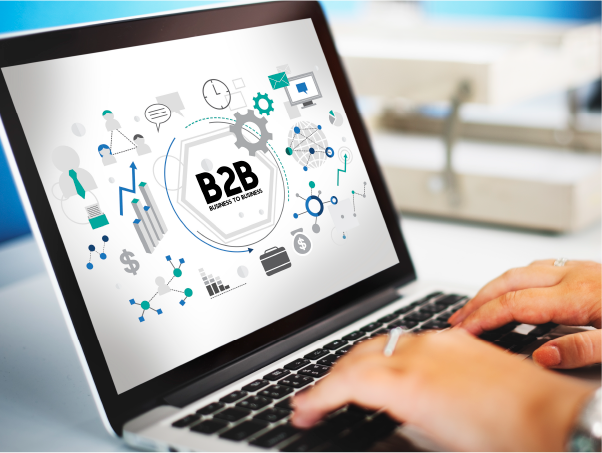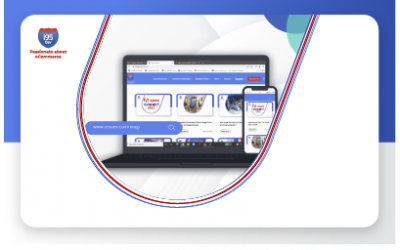August 11, 2022
Top 10 high-performance hacks for your B2B eCommerce website

Running a B2B eCommerce website can be incredibly taxing, but if you think otherwise, chances are you haven’t seen the tangible results yet. As digitization becomes a full-fledged reality for the B2B landscape, it has become inevitable to excel at eCommerce.
While there are many factors, it is noteworthy that all B2B decision makers are making online purchases (B2C) in their regular lives, which is, in turn, shaping their B2B eCommerce expectations.
To help our readers be at the top of their game, i95Dev experts have curated ten high-performance hacks to help your B2B eCommerce website win more conversions and revenue.
Let’s begin.
#1: Optimize checkout for users
Optimizing the checkout process is the first and the quickest change you can make to your B2B eCommerce website. Aim to reduce all unnecessary steps, include as many prompts as possible, and divide the checkout process into small, sensible chunks. Also, you must optimize the UI for ease of usage since unattractive or poorly designed UI ads can significantly complicate the checkout process.
Furthermore, ensure that the information the user provides when browsing your website is used efficiently. For instance, if a user browsed a specific product category, you may add relevant products for cross-selling. Moreover, ensure that re-ordering is a seamless experience and that users can easily automate it- this works like a charm for most B2B product categories.
#2: Don’t hide any terms and conditions; simplify them instead
The software industry is notorious for lengthy terms and conditions that one agrees without going through, but B2B eCommerce websites must not replicate that. This can be a deal breaker in many cases since the terms and conditions determine the value delivered and the money significantly spent.

In addition, the B2B purchase cycle is quite complicated, so adding more clutter would only lessen your chances of conversions. An excellent way to minimize T&C is to include them in the documentation process (SLAs, NDAs) since these are negotiable items. This way, you can increase the conversion rates without compromising on the T&Cs that serve mutual interests.
#3: Build relevant product catalogs
Product catalogs are one of the most essential components of B2b eCommerce success- they aid in market research, comparisons, and purchase decisions. Therefore, we agree that a good product catalog plays a more prominent role throughout your B2B sales funnel.
As a rule of thumb, your product catalogs should be easy to consume, have the right amount of information, be downloadable, and most importantly- facilitate purchases. You may add FAQs and additional information separately while using plenty of high-quality product images for each offering variant.
#4: Be creative and excel at buyer experience
Gone are the days when creativity in eCommerce was limited to B2C brands. As time passes, B2B players are entering the landscape exponentially, increasing your competition significantly. Thus, you must be creative regarding buyer experience to convert your visitors.
In the SEO community, it is widely believed that 95% of your visitors won’t return to your website, and the conversion ratios sit at low single-digit numbers. However, a good buyer experience will help you skew these ratios in your favor and build more positive impressions when purchases matter the most.
#5: Ensure that your B2B eCommerce website is mobile optimized
We are half past 2022, and by no means should you underestimate the power of mobile optimization. While it can be a tedious exercise for many B2B eCommerce store owners, it is essential to know that despite the widespread belief that high-value transactions are made in front of computers, you will leave a lot of cash on the table.
Even if the transactions are made using computers, a large amount of market research and casual surfing occurs via mobile devices. Therefore, failing to optimize your B2B web store for smartphones will also hurt your SEO while negatively impacting the user experience for a large section of your potential clients.
#6: Leverage personalization extensively to improve CX, UX
If your B2B eCommerce website doesn’t already have visitor account-based access, it is the first thing you must implement. This allows you to personalize their user experience since you know their preferences. The user data is also essential for optimizing the checkout process as having information like company size; estimated requirement reduces their work when making a purchase.

Assisted the client in developing and designing their eCommerce website
#7: Create purchase-friendly product descriptions
Improper, incomplete, hard-to-read product descriptions are among the most significant factors that drag the B2B conversion rate. Many businesses upload lengthy product descriptions, making it tough to find the information that helps make purchase decisions. Some of the product descriptions lack the required information or are simply too complicated for consumption.
Since this is a common observation among B2B eCommerce websites, make it a point to write purchase-friendly product descriptions. Again, take the help of your sales representatives, as they will provide you with both the CRO insights and feedback for optimizing purposes.
#8: Help your visitor’s purchases via AI Chatbots, human chat support
Earlier, chatbots were assumed to be tools to enhance self-servicing, but it is no longer the case, given their versatility. Chatbots can be incredibly effective for sales as they can replicate many activities performed by sales representatives faster. However, one of the significant advantages of using AI chatbots is that people feel less social pressure when using them.
For instance, a user might be the primary decision maker but lack knowledge regarding your product category or their requirements. An AI chatbot can help such users access the exact information, make comparisons, and get additional material over hours without feeling awkward. However, you still need to ensure that human chat support is available in case the user queries are beyond the scope of a chatbot to provide a good user experience.
#9: Level up your B2B eCommerce content marketing
Content marketing is arguably one of the most effective strategies ever since the internet became mainstream, but when it comes to B2B organizations, a lot is yet to be explored. Unlike consumer brands, your content marketing efforts must reflect the scale and impact of business decisions.

Educational content plays a more significant role in B2B eCommerce marketing, but at the same time, it must reflect your brand tone and values as an organization. An email newsletter, LinkedIn posts, blogging, ebooks, and a podcast are some of the must-have content marketing initiatives for your long-term success.
#10: Provide excellent, personalized CRM services and marketing offers
If there were to be one piece of advice that would outweigh all online B2B eCommerce best practices, it would be focusing on customer relationship management. Trust is the biggest factor in B2B transactions because every purchase has the potential to cause rippling adverse effects.
Thus, all buyers seek to solve their doubts, want to be educated- or test their expertise. Also, they might need specific value additions or better deals that reflect their best interests at different times. Acing at customer relationship management (CRM) will ensure that your B2B eCommerce website capitalizes on the trust factor.
Summing Up
If we were to point out a common element among these ten high-performance B2B eCommerce hacks, it would boil down to being proactive with serving your customers. But unfortunately, existing businesses often see setting up an eCommerce website as a formality without considering it a hard-core sales channel.
On the other hand, new businesses find a lack of inspiration from similar players as the main reason to deliver unexciting CX and UX on their websites.
Leverage these ten hacks to maximize your B2B eCommerce website’s revenue. Also, get in touch with the i95Dev team to get the best-of-the-breed eCommerce solutions or implement fully customized features on your B2B eCommerce website.
Recent Blogs
Enhancing Shipping Precision with Custom Shipping Groups in Adobe Commerce/ Magento
Enhancing Shipping Precision with Custom Shipping Groups in Adobe Commerce/ Magento Author Category Share Three things matter the most when it comes to eCommerce shipping: speed, accuracy,...
Managing Massive Product Catalogs: Why Synchronization is the Key to Efficiency
Managing Massive Product Catalogs: Why Synchronization is the Key to Efficiency Author Category Share The automotive aftermarket industry is vast and highly competitive, requiring businesses...
A Complete Guide to Seamlessly Integrating Adobe Commerce with NetSuite
A Complete Guide to Seamlessly Integrating Adobe Commerce with NetSuite Author Category Share Integrating Adobe Commerce (formerly Magento) with NetSuite ERP can transform the way businesses...



